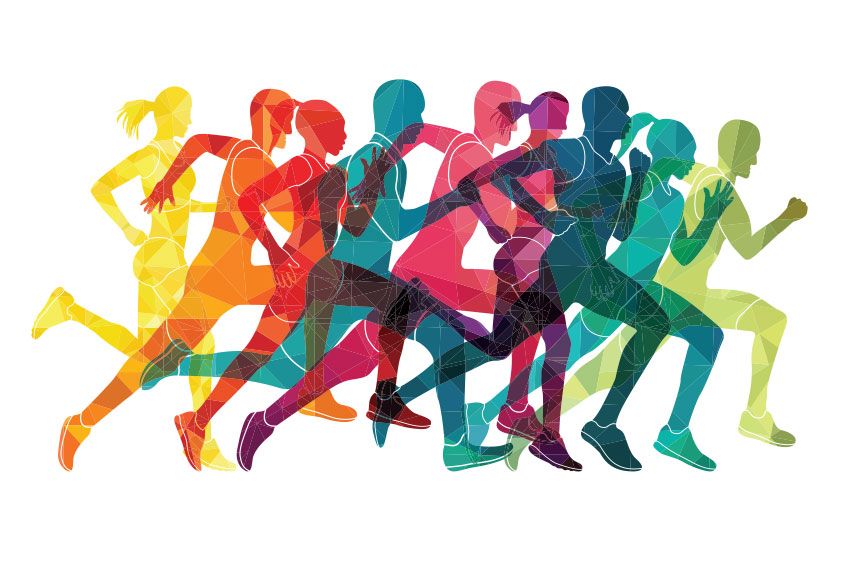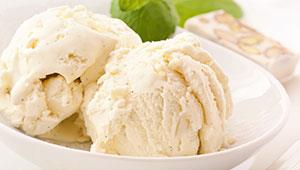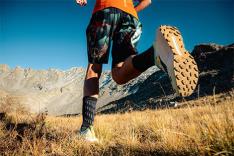
Introducing our new series where our Certified Run Coach, Josh Janicek, addresses your burning questions! If you've ever had a question you've been dying to ask, now's your chance. Submit your queries through our Google form [here] for consideration. While we aim to make this series fun, our goal is to provide you with valuable insights. Please note that not all questions may be answered, and for medical advice, consult your healthcare professional, not from ACTIVE or Josh.
About Our Running Coach: Josh Janicek is a Road Runners Club of America Certified Run Coach based out of Austin, TX. He is a 7-time Boston Marathon qualifier, founder of an Austin-based run club and training group, and actively coaches athletes ranging from those who are new to running to competitive marathoners.
Why Trust Us?
ACTIVE.com's editorial team relies on the knowledge and experience of fitness and wellness experts including competitive athletes, coaches, physical therapists, nutritionists, and certified trainers. This helps us ensure the products we feature are of the highest standard. Collectively, the team has spent countless hours researching equipment, gear, and recovery tools in order to create the most accurate, authentic content for our readers. Customer satisfaction is also a key part of our review process, which is why we only feature products that are highly rated.
Let's dive in and get those questions answered!
Question #1: What is the best meal to eat before a 10k run?
Coach Josh: I would highly recommend the full English breakfast, washed down with 16 - 24 oz. of 2% or fatter milk, and 8 - 12 oz. of coffee mixed with a few tablespoons of Miralax.In all seriousness, it depends on a few things. You’ll want to make sure you’re fed and satiated, but not overly stuffed or uncomfortable, with an emphasis on healthy carbohydrates while maintaining a healthy balance of other macronutrients. An example of a night before meal might include one half to three fourths of your plate of brown rice, roasted potatoes, or whole grain pasta. One quarter to one half of your plate with lean protein, such as baked chicken or fish, grilled or broiled lean red meat, or tofu or tempeh. You can include some bright fruits and/or vegetables for additional nutrients. For a quick and easy meal, there’s always the tried and true sandwich. The bread provides carbs and you can get your lean proteins from sliced turkey or chicken. I’d avoid fatty and processed meats such as salami and bologna. And then there’s always a good ol’ slice of pizza or two.
For a morning meal, you can’t really go wrong with oatmeal or half of a bagel either plain or with peanut butter or banana.
But It really comes down to what you’re used to and what your gut is comfortable with. Emphasis should be on healthy carbohydrates, because those become glycogen, which the body stores and uses as energy for your muscles. Avoid rich and fatty foods that could cause stomach issues at an inopportune moment while you’re out on your run. The last thing you want to do is have to panic to find a restroom or, worse, have to come out of the wood wearing only one sock. I may or may not be speaking from experience.
We’re all different and our bodies digest and process foods differently. Experiment with what works best for you on your runs and in your training. And make note of what works best for you and what doesn’t, either mentally, or write it down so you’ll be prepared meal-wise if you’re planning on signing up for a race, or increasing the distance and/or intensity of your runs.
Question #2: What training advice or help do you have for a senior to participate in trail running events?
Coach Josh: Topping the list of advice is to have fun with it! Trail running is just flat-out fun, regardless of age or ability. Getting out on the trails allows you to be out in nature and there is a seemingly never-ending list of mental, physical, and spiritual benefits to playing in the dirt (or mud or rocks.) We all know that physical exercise is good for us. Being out in nature (re)connects you with the earth, gives you some fresh, clean air for the lungs, and, for me personally, reminds me of how small I am on this big blue marble called Planet Earth. Being in nature and out on the trails often recenters me, and puts my life into perspective, and helps me realize that more often than not, my life’s problems aren’t always as bad as I’ve made them out to be.For the actual task of preparing for trail running events, one word is key: specificity. Simply put, that means that if you’re going to participate in a trail running event, then you should practice running on trails. And the more specific you can be in your training, the better. If the event is on a technical and rocky course at elevation, you should seek that stimulus in your training and preparation for the event.
Now, as far as you being a senior, I’m cut from the cloth of “you’re only as old as you feel.” Regardless of your age, you need to be mindful and very honest with yourself as it relates to your overall health, experience, and training. Make sure to consult with your doctor before endeavoring upon any new physical activity or if you’re extending your exercise regimen beyond what you’re already used to doing, whether that’s intensity, distance, or time.
You can also seek out a run coach or a local run club. If you’re interested in working with a coach, find one that works best for you and possesses the requisite knowledge and experience to help you attain your goals. Again, be very honest and realistic about your experience, abilities, and goals when you’re talking to a prospective coach, and shop around for a coach with whom you feel most comfortable and you’re confident that they’ll patiently work with you and help you achieve the goals you have for your trail running events. And check around your area for run clubs or groups that are either geared towards trail running, or offer both road and trail group runs. Joining a run group is a great way to meet new folks and allows you the opportunity to ask specific running-related questions.
I’ll round out this answer by revisiting my initial advice to have fun in your training. Revel in and respect the trails and nature. Slow down and take in the scenery. Moderate and technical trail surfaces can be dangerous at times, so make sure to watch where your feet are going to land so as to not step off of or too close to a ledge, or onto a rock or root and risk injury. You’ll also want to share your glances with what’s coming up ahead. For example, you’ll want to see if there’s a sharp switchback, trail closure, water crossing, or low-hanging limbs up ahead and allow yourself enough time to slow down or stop. Be aware of your surroundings and take necessary cautions around wildlife, other things in nature, and other humans.
And always be prepared. Bring along any necessary supplies or gear that you might need while you’re out enjoying the trails. Examples are water, electrolytes, nutrition, first aid pack, trekking poles, headlamp or flashlight, and any personal safety equipment such as bear spray. Make sure you’re equipped with the right shoes. Most brands sell shoes that are made specifically for trail running and are designed to include features such as lugs for grip on varying surfaces and weather conditions, and cushioned outsoles and rock plates to more technical and rocky terrain.
Submit your queries through our Google form [here] for consideration.
Check Out The Latest Nike Running Shoe Deals on Amazon
By clicking on the product links in this article, we may receive a commission fee at no cost to you, the reader. Sponsorships and affiliate commissions help support our research so we can help you find the best products. Read full affiliate disclosure here.
Running Events Near You
12th Annual Moorpark Mammoth Run
The Rotary Club of Moorpark • Moorpark, CA
Running [5K, 10K]
Haunted Heroes 5k, 10k, 15k, Half Marathon
ABWR • Los Angeles, CA
Running [5K, 10K, 15K, Half marathon]
2025 SPACEROCK Trail Race
New Global Adventures • Agua Dulce, CA
Running [5K, 10K, 15K, Half marathon]
About the Author

Stephen is the editor-in-chief of ACTIVE.com. He has been involved in the fitness industry for over twelve years but has been running or playing sports for most of his life.
Get ACTIVE on the Go


Couch to 5K®
The best way to get new runners off the couch and across the finish line of their first 5K.
Available for iOS | Android








Discuss This Article